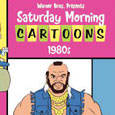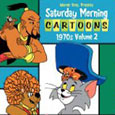Hanna-Barbera/Ruby-Spears Productions (1980-1988), Warner Home Video (May 4, 2010), two discs, 265 mins plus supplements, 1.33:1 original aspect ratio, Dolby Digital Mono, Not Rated, Retail: $26.98
Storyboard:
Eleven Saturday Morning cartoons from the 1980s are combined in this 2 disc set featuring some of the many shows produced by Hanna-Barbera and Ruby-Spears during the decade. This set includes episodes from Goldie Gold and Action Jack, Chuck Norris: Karate Kommandos, The Completely Mental Misadventures of Ed Grimley, The Flintstone Kids, Mister T, the Biskitts, Monchhichis, Galtar and the Golden Lance, Dragon’s Lair, Thundarr the Barbarian and The Kwicky Koala Show.
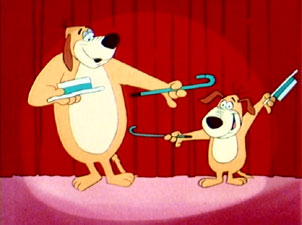
The Sweatbox Review:
In the 1980s, with an established audience of kids expecting to be entertained every Saturday morning, production companies and networks used the timeslot as a giant test market for new shows and concepts. While there a few shows that periodically topped the ratings chart in the mornings, the rest of the timeslots were often filled up with bottom-of-the-barrel shows. Many of these were hoping to capitalize on the success of a similar show by rival production companies and networks. The results were mixed. While some went on to find great success, or at the very least cult notoriety, others came and went almost without being noticed. The cartoons contained in this set are no exception. They contain some memorable shows (Thundarr, Flintstone Kids) along with some I didn’t know existed (Karate Kommandos, The Completely Mental Misadventures of Ed Grimley).
This set has been released by Warner Bros. in the heels of Saturday Morning Cartoons 1960’s Collection and Saturday Morning Cartoons 1970’s Collection. The company owns more cartoon properties that they probably know what to do with, which include the Hanna-Barbera and Ruby-Spears cartoons that dominate this set. Sure, there were other players in the 1980’s, but Hanna-Barbera was already an established cartoon powerhouse by the time 1980 arrived. Ruby-Spears was founded in the late 1970s as a production company modeled after Hanna-Barbera, and was run in much of the same way. Both are remembered nostalgically by fans of 1980s television animation along with Filmation, Disney and DiC.
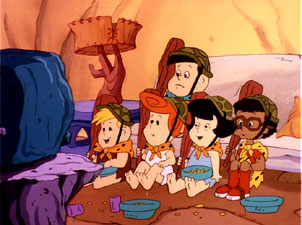
The cartoons released here cover a variety of different genres, from action/adventure to slapstick comedy. More specifically, the cartoons can be grouped into four groups: action/adventure (Goldie Gold and Action Jack, Chuck Norris: Karate Kommandos, and Mister T), comedy (Completely Mental Misadventures of Ed Grimley, Flintstone Kids, and The Kwicky Koala Show), fantasy (Galtar and the Golden Lance, Dragon’s Lair, and Thundarr the Barbarian), and the general genre of cute and cuddly characters that are always in peril (The Biskitts, and The Monchhichis). This actually is a great mix of the different types of shows seen on Saturday morning television, although most of these are incredibly forgetful. This was due to long intervals that took place between new episodes, cancelled shows with short runs, and lack of syndicated runs by some shows.
Disc One
Goldie Gold and Action Jack (1981)
Goldie Gold and Action Jack was one of the original Saturday morning adventure shows produced by Ruby-Spears. Attempting to appeal to both boys and girls, the show featured the wealthy, adventurous Goldie Gold partnered with the intelligent and resourceful Action Jack. Both kind of share the spotlight in their adventures, although Goldie Gold has the coolest gadgets. In Night of the Crystal Skull, Goldie Gold is holding a party when men dressed like Inca warriors kidnap two astronauts from her party. Eventually, Goldie and Jack track them down to Machu Picchu in the Peruvian highlands. The episode here is a bit of a mess, with a ridiculous premise and insane mystery that requires a child to know much too much about world history and mythology, while at the same time over-simplifying things. For example, why exactly are there Inca warriors running around the USA when they have been gone for nearly 500 years? There are many other questions left unanswered to this episode, which is probably why almost nobody remembers the show nowadays.
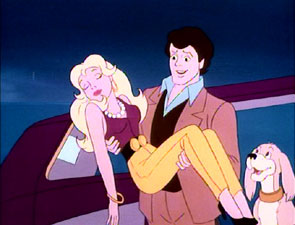
Chuck Norris: Karate Kommandos (1986)
This is another television series that I do not remember watching as a kid. Apparently this was because it was only created as a syndicated five-episode series by Ruby-Spears Productions. In this world, Chuck Norris is a government agent working with an elite team to fight against the villain Claw and his henchmen. Each episode started with a live-action Chuck Norris setting the story and conflict. At the end of each episode, he returns with the moral of the story. In Deadly Dolphin, the Kommandos are training with dolphins in the ocean (obedience training), when they are attacked by Angelfish and Claw’s goons. They kidnap Dr. Sanford, in order to infiltrate the top secret military base called Sealab which he helped to design. While the action in the story can be exciting at times, the team is mismatched with too many comedic sidekicks (with some awful stereotypes to boot), and a bland villain.
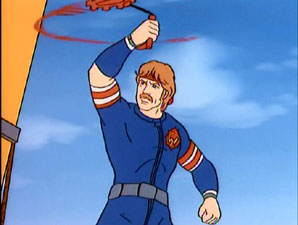
The Completely Mental Misadventures of Ed Grimley (1988)
Ed Grimley was a character created by Martin Short and first appeared on the television series SCTV who was later also featured on SNL. The character is a hyperactive nerd who loves to play the triangle and talk non-stop about everything he is doing. In Tall, Dark and Hansom, Grimley takes care of his cousin’s horse and buggy while he is out sick. The horse, however, doesn’t like to obey instructions. In the middle of the episode, the Gustav Brothers interrupt the show to talk about gravity (the piano crashing down on top of Ed). As new hijinks continue involving Ed and his cousin’s horse, a show within a show is also featured when Ed watches a show called Count Floyd’s Scary Stories, told by a live-action vampire who is more pathetic than scary. Although the show lasted for a short 13 episode season, I can barely recall this show in my memory. I have a vague notion of the character, but nothing on the actual show. It is a very odd show, with lots of interruptions between the two Gustav Brothers segments along with Count Floyd’s stories. It features some rapid, quickfire dialogue that now seems terribly dated. While not a boring show, I can imagine this show to be a bit off-putting for children.
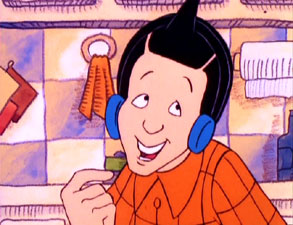
The Flintstone Kids (1986)
Perhaps the show I was most looking forward to seeing on this set was The Flintstone Kids. As a child of the 80s, it never dawned on me that the babyfication of classic cartoon characters was a trend despised by many classic cartoons fans. I, for one, loved shows like A Pup Named Scooby Doo, Muppet Babies, and of course The Flintstone Kids. In the case of The Flintstones, I think that the kids show brought the classic dynamic between the famous characters into a new situation allowing them to break free of their primetime sitcom roots (The Honeymooners). The show was actually one of the rare Hanna-Barbera cartoons from this time that lasted more than one season (lasting two seasons). There are two half-hour episodes included on this set, which are separated into four segments.
The first segment, and full episode, is The Bad News Brontos where the kids play for a terrible little league team called the Bad News Brontos and only get better when Fred’s mother decides to coach the team against their rivals the Bedrottens. This is a funny episode, made even funnier with the involvement of Fred’s mother who develops into a very funny character. A second segment is called Invasion of the Mommy Snatchers, and is actually a “Captain Caveman and Son” segment. In it, Captain Caveman, a prehistoric superhero, discovers a plot where all the mothers in Bedrock have been abducted by aliens. The superhero then takes it upon himself to recover the mothers and save the Earth. The third segment in the set is a “Dino’s Dilemmas” segment called Dreamchip’s Cur Wash. In this short segment, Dino is used to test Dreamchip’s new washing machine. Needless to say, Dino is none too happy to cooperate with Dreamchip who keeps reminding Fred that he’s only a mutt. The last segment included in this set is “Flintstone Funnies” segment called Princess Wilma. These segments usually featured the main characters dreaming of being in fun adventures. In this case, Wilma dreams that she is a princess with a magic mirror in need of a knight in shining armor. Of course, with Fred as her knight, things do not go exactly according to plan. All of these short segments are funny, with a special mention of Princess Wilma which is a great spoof on the classic knight-in-shining-armor story. This is at least one show from this set that manages to be memorable and actually still relevant.

Mister T (1983)
This show was actually one of the longer-lasting Ruby-Spears shows featured on this set. In it, Mister T plays himself as the “coach” of a competitive gymnastics team. This of course makes no sense, but allows Mister T to be surrounded by young, athletic kids that help him solve different mysteries around the world. In Mystery of the Golden Medallions, a mysterious thief is stealing gold medals from different events around town, including the kid’s gymnastics competition. The mystery is actually well thought-out with some clever clues provided for the viewer. There are some clever characterizations of the different members of the team and we can quickly figure out their personalities. I could never really figure out why Mister T was coaching a gymnastics team, but in the end it actually works (he fights a shark barehanded and everything). Live action segments of Mister T explaining the moral of the story serve as bookends to each of the episodes. Overall, it is an interesting show, and one I actually remember watching as a kid.

Disc Two
The Biskitts (1983)
In this Hanna-Barbera production, a group of cute and cuddly puppies guard the royal treasure of Biskitt Castle. Ready to take their treasure is King Max who is always on the lookout for the Biskitts’ secret location so he can get his hands on their treasure. The first episode is broken out into two stories. The first story is As the Worm Turns where the Biskitts befriend a caterpillar and bring him back to their castle. However, when the worm begins to eat through the leaves that protect the castle from being discovered, King Max gets very near to finding their secret location. In Trouble in the Tunnel, Shiner convinces a young Biskitt named Scat to polish the royal treasure for him. Meanwhile, while the other Biskitts are busy with their chores, a mole digs through the Biskitt Palace grounds, opening a tunnel between King Max’s castle and Biskitt Castle. The Biskitts were targeted to very young kids and has a very similar feel to shows like The Smurfs which became a huge hit for Hanna-Barbera just two years earlier. While there are some big differences between the two shows, it is clear that the producers wanted to capitalize on the same formula. Unfortunately, the characters are not as compelling as the Smurfs and the show only lasted one season.

Monchhichis (1983)
Hanna-Barbera produced Monchhichis in collaboration with Mattel who was promoting a line of dolls that had become incredibly popular in Japan just a few years earlier. I suppose I am not ashamed to say that even I had a Monchhichis doll when I was a kid. The show was basically another cute and cuddly animal show complete with happy critters that occasionally fought against their grumpy counterparts, the Grumplins. In Tickle Pickle, the Grumplins take a boat to ambush the Monchhichis in their treetop home. During their attack, the Happy Works (an industrialized happiness factory) gets severely damaged along with a “Tickle Crystal” that powers the machines. The Monchhichis must then go out and brave all the elements, along with more than a few Grumplins, to find a new crystal and bring happiness back to their world. Overall, the Monchhichis are sort of a forgettable series. The show was squarely aimed at younger kids, without making it compelling enough for older kids who might have been watching.

Galtar and the Golden Lance (1985)
Of the three fantasy/adventure shows featured on this set, I have a hard time finding my favorite. While I do not specifically remember Galtar and the Golden Lance from my childhood, I really enjoyed this Hanna-Barbera produced series – or at least the episode featured on this set. In Galtar and the Princess, Galtar and Princess Goleeta are introduced in the show’s pilot episode. The two heroes team up to defeat Tormack who is bent on conquering the world. In the process, he has stolen Goleeta’s Sacred Shield and killed the rest of her family. Their only chance at defeating Tormack is tracking down the Golden Lance which Tormack also needs to possess in order to complete his domination of the world. There is a lot of ground to cover in the first episode, but what I found compelling about the series was the serialized nature of the episode. At the end of the episode Galtar has his Golden Lance but hints of future adventures with Goleeta as they try to regain her Sacred Shield from Tormack. Future episodes of the show would also introduce Goleeta’s brother Zorn as well as other minor supporting characters. Overall, it was a good show, which I would be interested in seeing in its entirety someday.
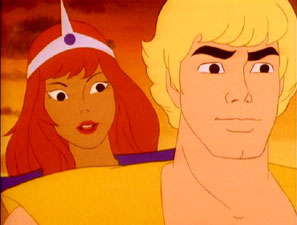
Dragon’s Lair (1984)
The second fantasy/adventure show featured on this set is Ruby-Spear’s production of Dragon’s Lair, which was based on the cult Don Bluth animated video game of the same name. This mildly comic fantasy show featured a knight called Dirk the Daring battling the evil dragon Singe. In this first episode, The Tale of the Enchanted Gift, Princess Daphne’s birthday is approaching and Dirk promises to give her an exciting gift. Singe hears of Dirk’s quest and hatches a plot to get inside the castle by manipulating Dirk into taking one of his treasures. What made this show different from other shows of the time was its comic angle which made it more enjoyable to watch. Also, a narrator was used to move the story along as well as to interact with the viewers as it posed questions on what Dirk should do before each commercial break. Overall, the show was very enjoyable to watch and is another fantasy show I would not mind seeing again.
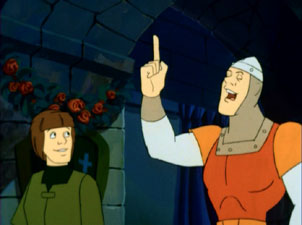
Thundarr the Barbarian (1980)
Perhaps one of the most anticipated shows featured on this set is Thundarr the Barbarian. This high-concept fantasy/adventure show was released early in the decade by Ruby-Spears and would last for two short seasons until it went into syndication. The action is set in a future Earth 2000 years after it has been devastated by a cataclysmic event (a comet rips the moon apart as it passes between the Earth and the Moon). The Earth has become a very different place filled with sorcery, futuristic science, and danger. The main character in the show is Thundarr, a strong warrior who occasionally yields a Sunsword as his only weapon against sorcery. Another major character is Ookla the Mok, an animalistic humanoid with brute strength. The third main character is Princess Ariel, the stepdaughter of a powerful wizard who also learned some magical spells of her own. In Secret of the Black Pearl, Thundarr is riding through the woods when he saves a human named Tyronn from a race of rat-like monsters called the Groundlings. Thundarr then agrees to deliver the magic black pearl to the humans in the ruins of Manhat (Manhattan) where the humans rely on it to protect themselves from a powerful wizard. Thundarr is a show with a compelling concept and probably ended before its time (the show was allegedly cancelled because it contained too much violence for the time). The show reminds me a lot of He-Man and Thundercats as it is set in an alternative future universe, but what makes this one more interesting is that it is actually a future Earth.
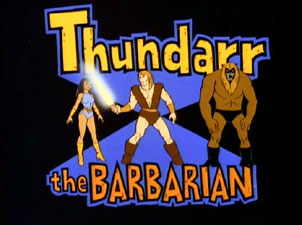
The Kwicky Koala Show (1981)
Perhaps known more for being one of Tex Avery’s final creations, The Kwicky Koala Show is a multi-segment show featuring different characters much in the vein of classic 1960s and 1970s Hanna-Barbera shows. The protagonist, Kwicky Koala, is a slow-talking, but fast-moving Koala who is continually pursued by Wilford Wolf. The other segments in the show were made up of shorts featuring the Bungle Brothers (two dogs named George and Joey seeking stardom), Crazy Claws (a wildcat who keeps escaping from a fur trapper named Rawhide Clyde and his dog Bristletooth), and Dirty Dawg (a homeless dog and his rodent friend Ratso evade Officer Bullhorn). The episode included in this set begins with a Bungle Brothers segment called Dry Run where they attempt to do a high-diving act. This is quickly followed by a Kwicky Koala segment called Robinson Caruso where Kwicky and Wilford find themselves on a deserted island while Kwicky is looking for a buried treasure. The Bungle Brothers return for a second segment called High Roller where they attempt to complete a high wire act. This is then followed by a Crazy Claws segment called The Claws Conspiracy where Crazy Claws attempts to evade capture by Rawhide Clyde and Bristletooth who in turn is avoiding the park ranger who is keeping the park safe from hunters. The Bungle Borthers then return for a third segment called Hat Dance where Joey dances a Mexican hat dance. The final segment of the episode is a Dirty Dawg segment called Dirty’s Debut which finds Dirty entering Ratso into a doggy beauty contest so they can win the cash prize and eat some food.
As a whole, the show looks a bit outdated for being something from the early 1980s. It actually is more reminiscent of ealier 1960s Hanna-Barbera shows like Yogi Bear and Huckleberry Hound in style. Tex Avery’s designs and some of his humor are included here, but the whole time I kept thinking of similarities between these characters and others. For example, Kwicky is very reminiscent of Droopy and his segments resemble old Roadrunner and Speedy Gonzalez cartoons. The difference is that Kwicky wants to be Wilford’s friend and doesn’t really understand Wilford’s obsession with him. Crazy Claws is reminiscent of a Yosemite Sam cartoon and Rawhide Clyde is strangely similar to the Looney Tunes character. Finally Dirty Dawg is very similar to Top Cat. Overall, it was not a highly innovative or original show, although I think it had potential. The best parts for me were the Bungle Brothers segments which actually made me smile.

Is This Thing Loaded?
The first disc opens with trailers for both Scooby-Doo: Abracadabra Doo and Peanuts 1970’s Collection, Vol. 1. A trailer for Peanuts 1960’s Collection is included in the Special Features section of disc one, and one for Saturday Morning Cartoons 1960’s is included in the main menu of disc two.
The highlight of the special features on this set is a featurette entitled Lord of Light! – The Story of Thundarr the Barbarian (18:30). In it, both Ken Spears and Joe Ruby enthusiastically talk about the show and what it meant for them and the studio. There are also interviews with Charles Zembillas (founder of the Animation Academy), Chuck Sheetz (Professor of animation at UCLA), and Christopher Vogler (author of “The Writer’s Journey”). They go through all of the facets of Thundarr, including what it represented at the time, its influences, how they wanted the show to be more mature and skew older, and how they came up with the concept for the show. Throughout the featurette, we are treated to many different clips from the show’s episodes as well as original sketches and drawings from the development of the show. Overall, it’s a sleek and well-produced featurette that is recommended for fans and curious viewers alike.
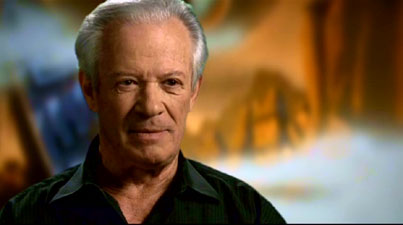
Case Study:
The DVD is housed in a standard black keepcase with a disc flap inside containing room for the 2nd disc. The set comes inside a cardboard slipcase which features different back art than the one found on the back of the keepcase. For some reason, Warner has decided to go with a pink color scheme for this DVD release, which is strange given the more male-skewing shows on the set. The front cover prominently features characters from Monchhichis, Mister T, Flintstone Kids, Thundarr the Barbarian, The Kwicky Koala Show, and Dragon’s Lair. On the back cover of the keepcase are characters from The Flintstone Kids and The Kwicky Koala Show. However, the back cover of the cardboard slipcase features characters from The Completely Mental Misadventures of Ed Grimley and The Biskitts. Disc One art features Barney and Fred from The Flintstone Kids while Disc Two art features the Monchhichis.
Ink And Paint:
A warning shows up on the screen when you start either one of the discs that reads, “Portions of original film elements from certain programs contained herein no longer survive in pristine condition. As a result, archival elements of varying quality have been carefully assembled to provide you with as close an approximation of the original presentation as possible.”

I think that it is commendable for Warner Bros. to provide this disclaimer since most of these shows have fallen out of circulation after nearly 30 years. While some of these have been played on the Cartoon Network and Boomerang in recent years, most have not enjoyed fruitful syndicated runs. Some of the episodes have considerable amounts of grain and dust fragments commonly found in cartoons from this period. I did not notice any variance in quality between segments of the same show, but it is likely that the transitions were smoothed out to make it look more seamless. It was difficult for me to find out if any segments had been cut, as I had nothing to compare it with, but none of the episode stories indicated this took place.
One has two options when selecting episodes to watch. There is a “Play All” feature and one where you can play one individual segment of a show. This last option was actually very inconvenient on segmented shows like Kwicky Koala where some segments only last one minute and can only be played individually and not as one complete episode. There should have been an option to play all segments from the same show particularly for The Flintstone Kids and Kwicky Koala which had some of the shortest segments.
Scratch Tracks:
The sound included in this release is very basic. Most of the shows have been included here with their basic original mono track. The results are expected with few tracks that stand out. While the case for this DVD only lists English & Spanish tracks, Portuguese Dolby Digital Mono tracks are also provided. English, French, Spanish, and Portuguese subtitles are also available.

Final Cut:
I was very excited when I heard that Warner Bros. was releasing a 1980s version of the Saturday Morning Collection series. As a child of the 80s, I grew up watching many of these cartoons along with some others. I guess what I hadn’t really thought about were the shows that could be included in this set. I had a hard time remembering about half of the shows on the set (although knowing Mister T and Chuck Norris helped give those shows more notoriety). Coming into this set, I was most looking forward to seeing The Flintstone Kids, Thundarr the Barbarian, and for some oddly nostalgic reason, Monchhichis. What I learned is that while some of the action/adventure shows have aged badly over the years, the fantasy shows are still surprisingly relevant and entertaining. I left reviewing this set with a desire to see more episodes of Thundarr, Galtar, and Dragon’s Lair. I was surprised that Warner did not include The Smurfs nor The Snorks in this set, and I hope to see these, along with other Hanna-Barbera shows, in future sets.
 | ||
 |


